
Cactus Around Las Vegas, Vegetation Around Las Vegas
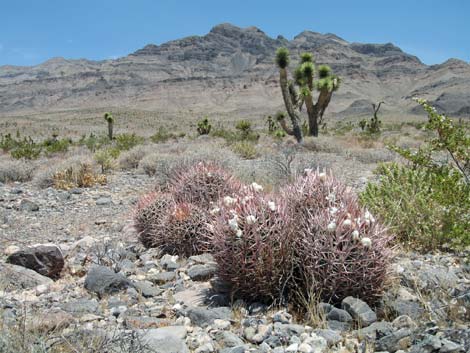 |
General: Cottontop Cactus (Echinocactus polycephalus) looks like a cross between a Hedgehog Cactus and a Barrel Cactus. Individual stems look like barrel cactus, but they grow in clumps like hedgehogs. Individual stems grow to about 12-inches in diameter and 15-inches tall, and they have ribs (flutes) running from bottom to top. The stems are loosely covered with relatively long, stout, flattened spines like those on barrel cactus, but Cottontop Cactus lack an underlying layer of radial spines. Flowers grow from the top center of the stems, and the fruits are covered in soft, woolly hairs. Cottontop Cactus grows to about 3-ft in diameter and height. Cottontop Cactus are generally uncommon, but they can be locally common components of the desert vegetation community. Cottontops occur in the Upper Sonoran Life Zone (Mojave Desert Scrub). A good place to see this species is along the Mormon Well Road in the Desert National Wildlife Range, a few miles east of Corn Creek Station. Subspecies: E. p. polycephalus is said to have felting on the new spines and the seeds are covered in small bumps (papillae). In contrast, E. p. xeranthemoides is said to have smooth spines (or few hairs) and smooth, shiny seeds. E. p. polycephalus is widespread in the deserts around Las Vegas, while E. p. xeranthemoides mostly occurs inside the Grand Canyon upstream from about Phantom Ranch to Marble Canyon Bridge. |
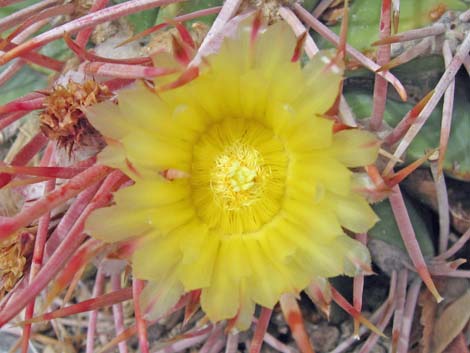 Cottontop flower |
Family: Cactus (Cactaceae). Other Names: woolly cactus, woolly-headed cactus, many-headed barrel cactus, harem cactus. Homalocephala polycephala. Plant Form: Clumps of upright, short, globular stems that emerge from the ground. Stems ribbed, with spines growing from the top of the ridges. Height: Stems 12- to 15-inches tall, 12-inches in diameter; clumps to 3-ft high and 3-ft wide. Trunk: None. Spines: Main spines only; no or few radial spines (the smaller spines around the base of the main spines). Compare with California Barrel Cactus. |
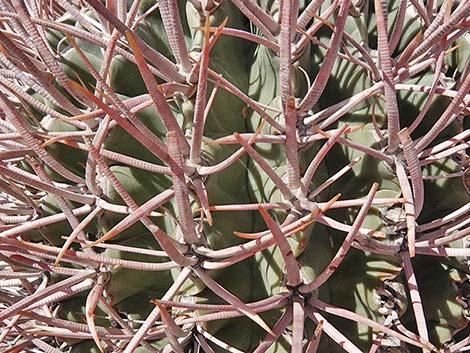 Main (central) spines only, radial spines more or less absent |
Leaves: None (reduced to spines). Flowers: Grow from the top-center of the stems. Small, yellow; blooms in late spring to early summer. Fruit: Oblong, 2.5-inches long, densely woolly, few spines. Seeds: Black, 1/8-inch long. These seeds are among the largest of all barrel-cactus-type seeds. Habitat: Rocky bajadas and outcrops. |
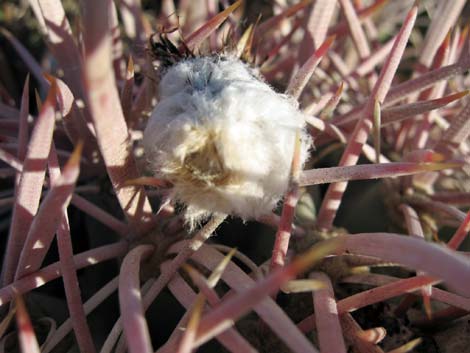 A single Cottontop Cactus fruit |
Distribution: Found in southwestern Utah, southern Nevada, and northwestern Arizona. Elevation: 1,000 to 5,000 ft. Comments: Birds and small mammals use the fluff (wool) on Cottontop Cactus fruits for nesting material, which spreads the seeds around. This species can be told from California Barrel Cactus by the presence or absence of wool. Cottontop Cactus have some wool on the top of the stem and on the fruits, while California Barrel Cactus does not have wool. In addition, Cottontop Cactus forms clumps, while barrel cactus almost always are solitary. Furthermore, the flowers and fruits of Cottontop Cactus emerge from the tips of the stems, while those of California Barrel Cactus form a broad ring around the top of the stem. In addition, California Barrel Cactus has radial spines (smaller spines around the base of the main spines), while Cottontop Cactus do not. |
 |
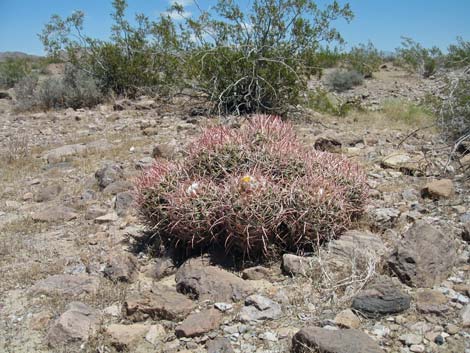 |
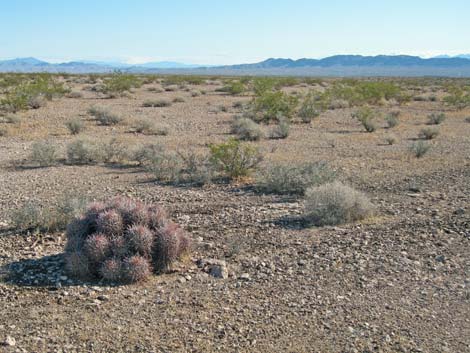 |
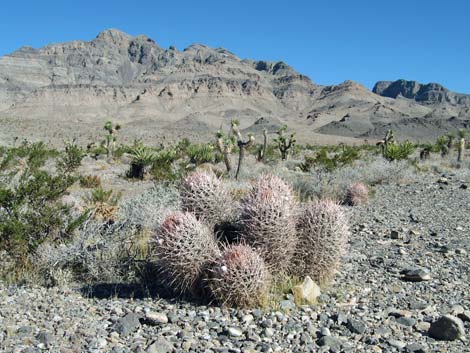 |
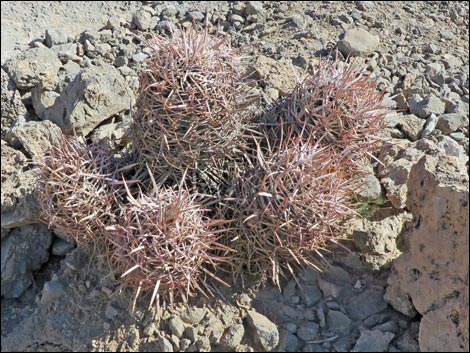 |
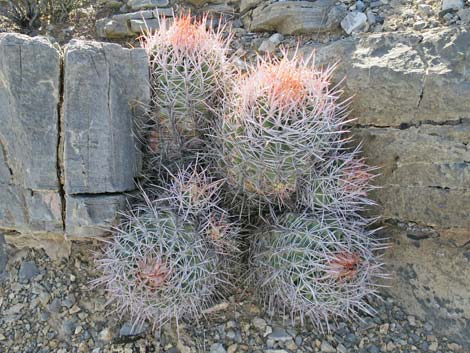 |
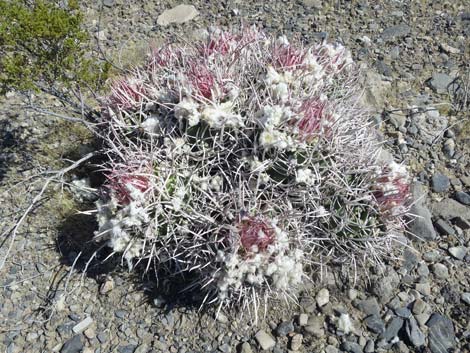 |
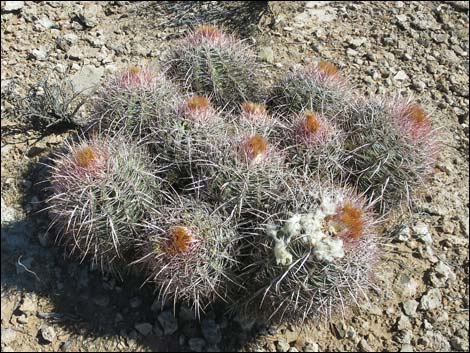 |
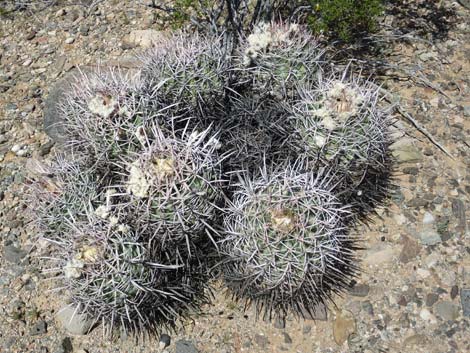 |
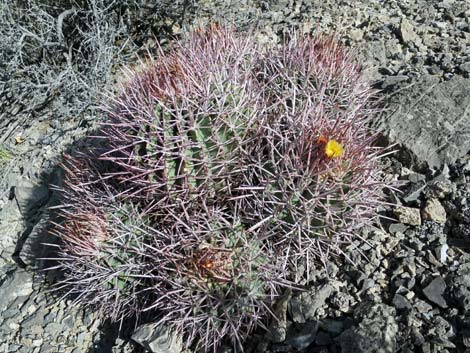 |
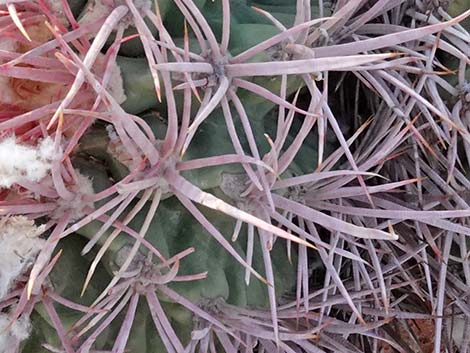 Main (central) spines only, radial spines more or less absent |
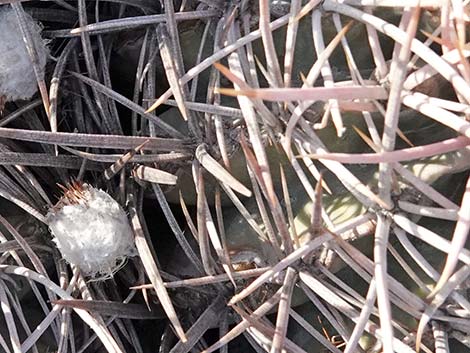 Main (central) spines only, radial spines more or less absent |
 |
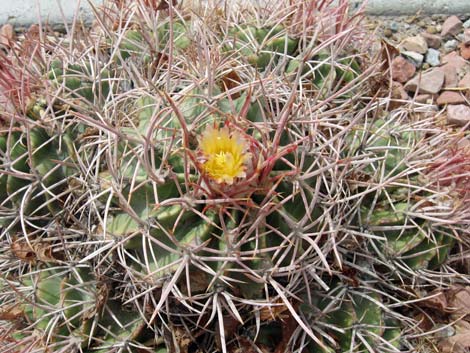 |
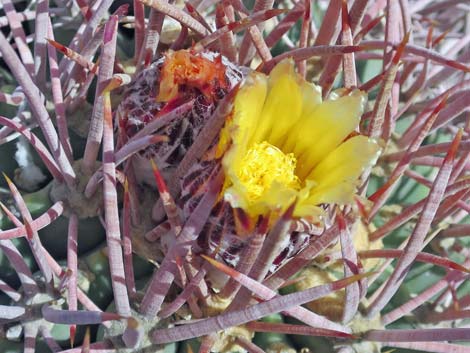 |
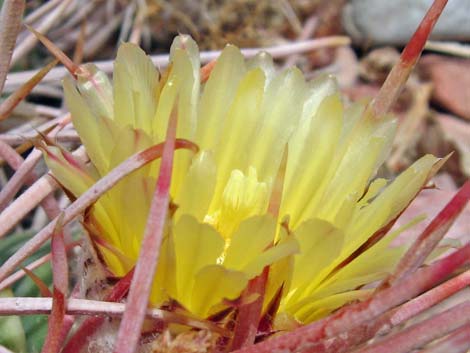 |
 |
 |
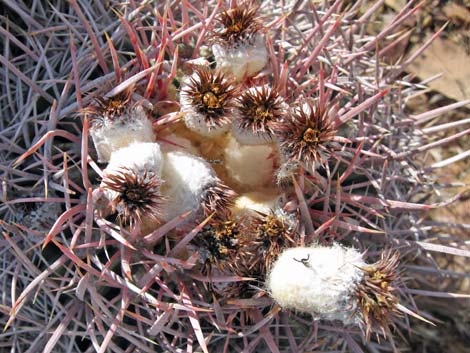 Cottontop fruits pulled out by animals |
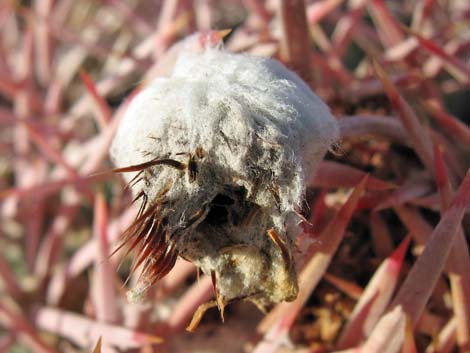 Cottontop fruit pulled out by animals |
 Cottontop fruits |
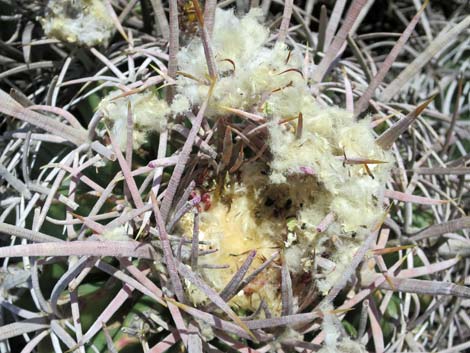 Cottontop fruits pulled out by animals |
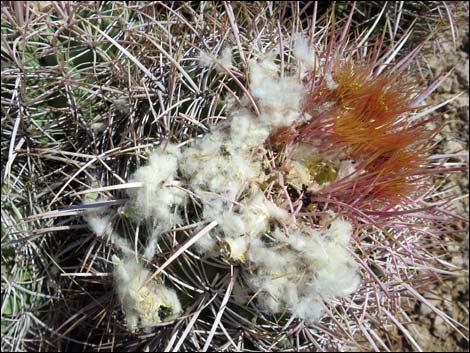 |
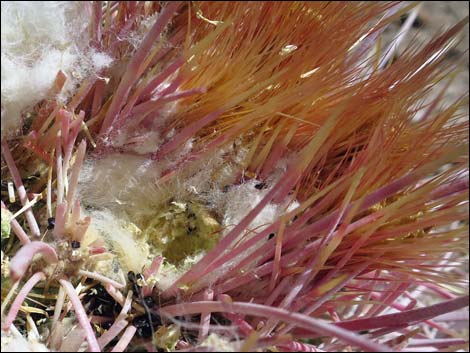 |
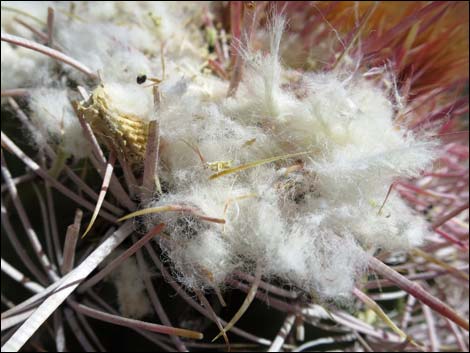 |
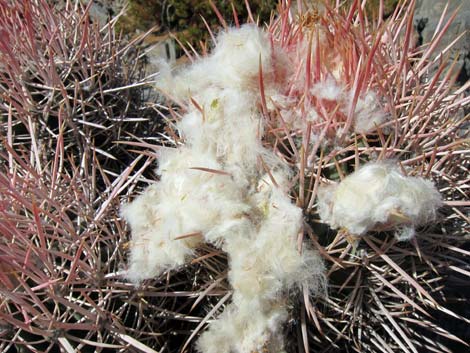 |
 The next generation getting started |
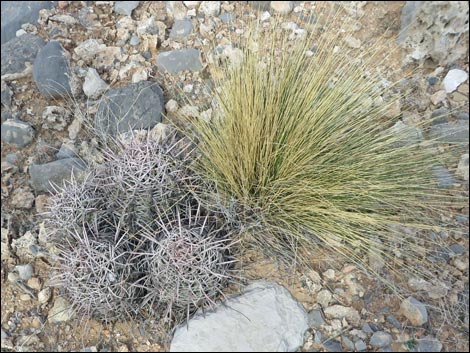 The next generation getting started |
Note: All distances, elevations, and other facts are approximate. Names generally follow the USDA database.
![]() ; Last updated 240615
; Last updated 240615
| All Cactus | Plant Species Index | Glossary | Copyright, Conditions, Disclaimer | Home |